What Cables and Connectors Are Used with PA Systems?
Various cables and connectors are used with PA systems to link all the equipment together. If the wrong cables or connectors are used, equipment may not operate correctly. In the worst-case, using the wrong cables or connectors could be dangerous, so be sure to understand which cables and connectors to use.
Connectors often used with PA systems
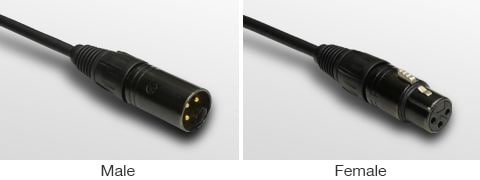
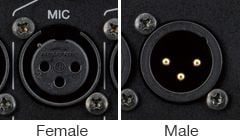
XLR connectors
These connectors are frequently used in professional applications—which demand reliability—as they are compatible with the balanced method described later, are sturdy and resistant to deformation, and feature a locking mechanism so that cables will not disconnect even if pulled. They are generally used with PA systems for microphones, power amplifiers, powered speakers, etc.
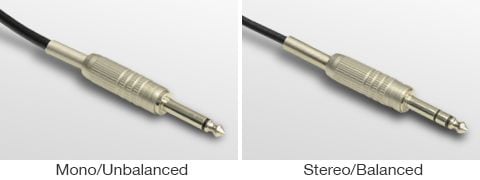
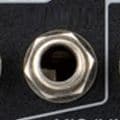
Phone connectors
There are two types of phone connector: stereo and monaural. Stereo phone connectors are also called TRS phone connectors. They are used to handle stereo signals for headphones, as well as to insert effects. TRS phone connectors can also be used for balanced connections. Monaural phone connectors are used only in the unbalanced method described later, and they are used with instruments such as electric guitars and keyboards, as well as with some lower powered amplifiers and speakers.
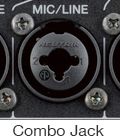
Tips
There is a connection, often referred to as a "combo jack" located on equipment that allows for the connection of both XLR and phone connectors. This type of connector is mostly used on mixers or audio interfaces.
Cables used with PA systems
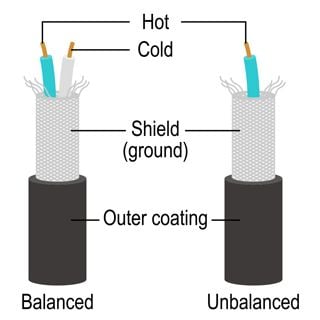
Electrical signals can be sent to different devices within the PA system when using these connectors, as either unbalanced or balanced signals. Each signal type uses its own type of cable.
The characteristics of balanced and unbalanced signals are:
-Balanced transmission: good at eliminating noise
-Unbalanced transmission: prone to noise interference
Balanced signals are transmitted with both a positive and a negative phase and use three transmission wires: hot, cold, and ground. In this case, a dual (hot and cold) shielded ground cable is used.
Unbalanced signals are transmitted with a positive phase only, and use two transmission wires: hot and ground. In this case, a cable containing one wire shielded by a mesh wire is used.
-Balanced cable: the two wires (hot and cold) that make up the cable core are covered with a shielding mesh wire
-Unbalanced cable: the single wire (hot only) that makes up the cable core is covered with a shielding mesh wire
How noise is canceled during balanced signal transmission
The longer a cable is, the more noise it will pick up, due to the way that cables are made. Microphone signals are especially delicate currents. When noise picked up by a microphone signal is amplified by a mixer, the noise will degrade the sound quality. Besides keeping the cable length short in order to reduce the amount of noise as much as possible, it is also possible to cancel the noise that is picked up along the way by using balanced transmission.
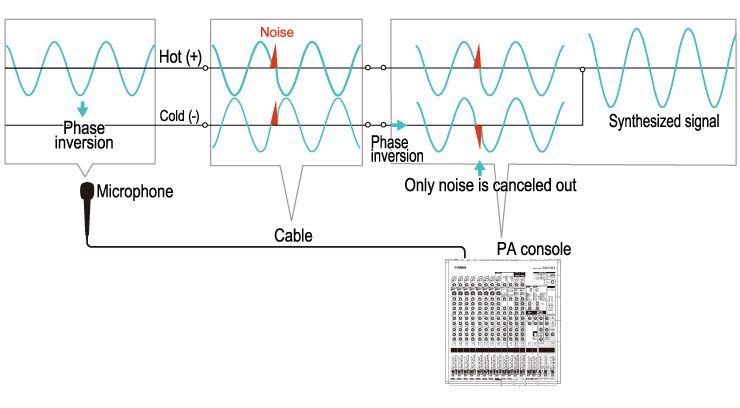
Noise always occurs in the same phase direction. If a signal in the opposite phase direction is added, the noise in the signal can be canceled out due to the plus-minus relationship.
Keyboards and playback devices already have a high signal-to-noise ratio, so the noise tends to be less noticeable even when using an unbalanced signal. That said, if longer cables are used, it is best to use a DI box, which will transmit a balanced signal.
<Note> Do not use a splitter cable or similar connection to split the stereo output from keyboards or other instruments into monaural channels with TRS connectors. This may cause a problem with the left and right channels canceling each other out, making the sound inaudible.
"Mic" and "Line" cables
A balanced cable with a male XLR connection and one end and a female XLR at the other is often refered to as a "mic" cable, because it is commonly used to connect microphones to mixers. An unbalanced cable with a phone connector at each end is often refered to as a "line" cable.
Other connectors and cables used with PA systems
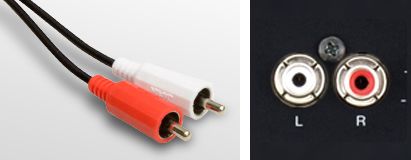
RCA pin connectors
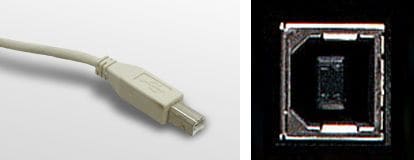
These connectors are generally used with audio and audio-visual (AV) equipment, and are solely for use with unbalanced signals. The connectors are colored according to the signal type. The white connector is used for sending signals to the left (L) channel, and the red connector is used for sending signals to the right (R) channel.
USB connectors
USB connectors are used to send and receive audio signals to and from mixers with audio interface functionality and personal computers. These connectors are used to record live performance mixes on a personal computer, or for music production.
Cables used with passive speakers
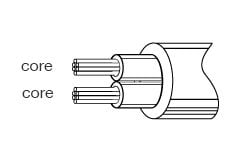
A dedicated speaker cable is required when connecting a power amplifier to a passive speaker. These are highly durable cables that transmit high-capacity electrical signals, which have been amplified by the amplifier. Unlike the microphone/line cables used with balanced/unbalanced signals, these cables are not shielded.
<Note> Use mic or line cables when connecting to powered speakers.
Connectors used with passive speakers

SpeakON connectors
This is a dedicated connector equipped with a lock, used for professional equipment. It is used to connect power amplifiers and passive speakers. After inserting the cable, turn it clockwise to lock it.
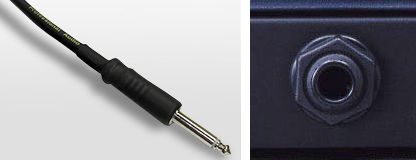
Phone connector (for speakers only)
Standard phone cables have a single shielded core, but dedicated speaker cables (unshielded) with two cores are used with passive speakers.
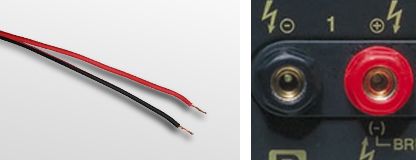
Stripped speaker cables
Stripped speaker cables are for general use, such as with home audio systems. They are usually color-coded to indicate the positive (+) and negative (-) wires. Connecting the wires in reverse will cause the phases to reverse, so be sure to connect the power amplifier and passive speakers so that their positive and negative sides match up.





